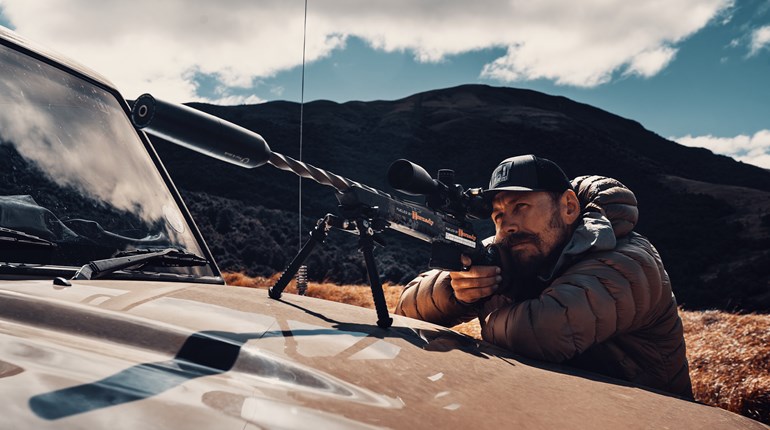
Introduction by Bryan Litz—Chief Ballistician for Berger Bullets. Litz is the founder of Applied Ballistics and has produced numerous articles, books, and videos related to the science of long-range shooting.
Mechanics of wind deflection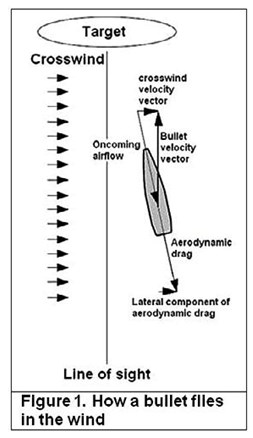
Many shooters falsely believe that the wind pushes on the side of a bullet as it flies downrange, and that’s what causes it to deflect. That description is inaccurate. So how does it work? A bullet is spin-stabilized, similar to a gyroscope. The term “stability,” as it pertains to bullet flight, means that the projectile will align its axis with the oncoming airflow. In other words, it flies point forward into the air. When a crosswind is present, it has the effect of altering the direction from which the air approaches the bullet (see Figure 1).
When the bullet turns to align itself with the oncoming airflow, the aerodynamic drag force, which is parallel to the flow is no longer aligned with the line of sight. In this way, the aerodynamic drag has a lateral component that pulls the bullet away from the line of sight, in the downwind direction. It’s that lateral component of aerodynamic drag that causes wind deflection during long distance shooting. Note also that the bullet only turns a fraction of a degree, which is why bullet holes in targets aren’t noticeably oblong.
Managing wind deflection—ballistics
Now that we understand the mechanism of wind deflection, what can we do to minimize its effect? There are some misconceptions about the best ballistic solution for minimizing wind deflection. The most common misconception is that a flatter shooting round will have less wind deflection. That’s not necessarily true. Consider the .308 Winchester, for example, with light versus heavy bullets. A light bullet of 155 grains and a muzzle velocity of 3000 fps will require about 12 MOA of elevation to be zeroed at 600 yards, with about 28 inches of wind deflection in a 10 mph crosswind. Compare that to a heavier 210-grain bullet at 2577 fps, which requires 15.5 MOA of elevation and 24.3 inches of wind deflection under the same conditions. The lighter, faster 155-grain bullet is 3.5 MOA flatter, but has 3.7 inches (15 percent) more wind deflection than the slower, heavier bullet. This comparison favors the heavier bullet for wind management.
In known distance target shooting contests, the flatness of the trajectory is a non-issue. It’s way more important to minimize wind deflection since that’s the variable that has the most uncertainty. So what are some ways to minimize wind deflection? Well, we already established that heavier (higher BC) bullets are better, even if it means a reduction in muzzle velocity. If you can fire heavier bullets at high muzzle velocities, that will minimize wind deflection even further. Firing the heaviest, highest BC bullets at maximum velocity is the way to minimize wind deflection.
It’s important to keep things in perspective. There are other important factors to consider in addition to just wind deflection—like recoil and accuracy. You might be able to minimize wind deflection by firing a 300-grain .338 caliber bullet at 3000 fps, but this would not maximize your score because of the extreme recoil that’s generated. The optimal solution from an overall point of view is something that minimizes wind deflection while also maintaining accuracy and being comfortable to shoot.
Managing the wind while shooting
Wind shooting requires the shooter to process a pile of information about the wind speed and direction from a myriad of indicators including flags, mirage, grass, trees, feel and the location of yours and other competitors’ previous shots. Go to any long-range shooting match and you’ll hear this topic discussed at length, with as many unique opinions as there are shooters discussing it. Some swear that the wind closest to the shooter is the only wind to worry about, while some claim the wind at the target is most important. Others will say that the bullet is most affected in the middle of its flight, at its highest point where the wind is fastest. There are also discussions about the relative importance of wind speed changes versus direction changes.
Of all these strategies, the one I personally use and advise is flexibility. Don’t make any assumptions—treat each range as though it were completely different each time you shoot a shot. Look everywhere for indicators (causes) that correlate to the deflection of your bullet (effects). If you can identify the indicators that correlate to what you’re seeing on the target, then you’ve identified the cause-effect relationship. Don’t ignore any indicators just because you expect them to be useless. Only dismiss an indicator after it proves to be inconsistent with where your shots are going. When you have found an indicator that seems to be good, use it, but don’t completely lose track of the others. If the condition changes enough, you may need to look for other indicators that are more valuable in the new condition.
Successfully steering your bullets through a difficult wind condition can be one of the most difficult and rewarding experiences in long-range shooting. Doing well requires experience and sometimes a little luck. Let’s see what a few of America’s most successful shooters have to say about their strategies for shooting in the wind.
Wind stories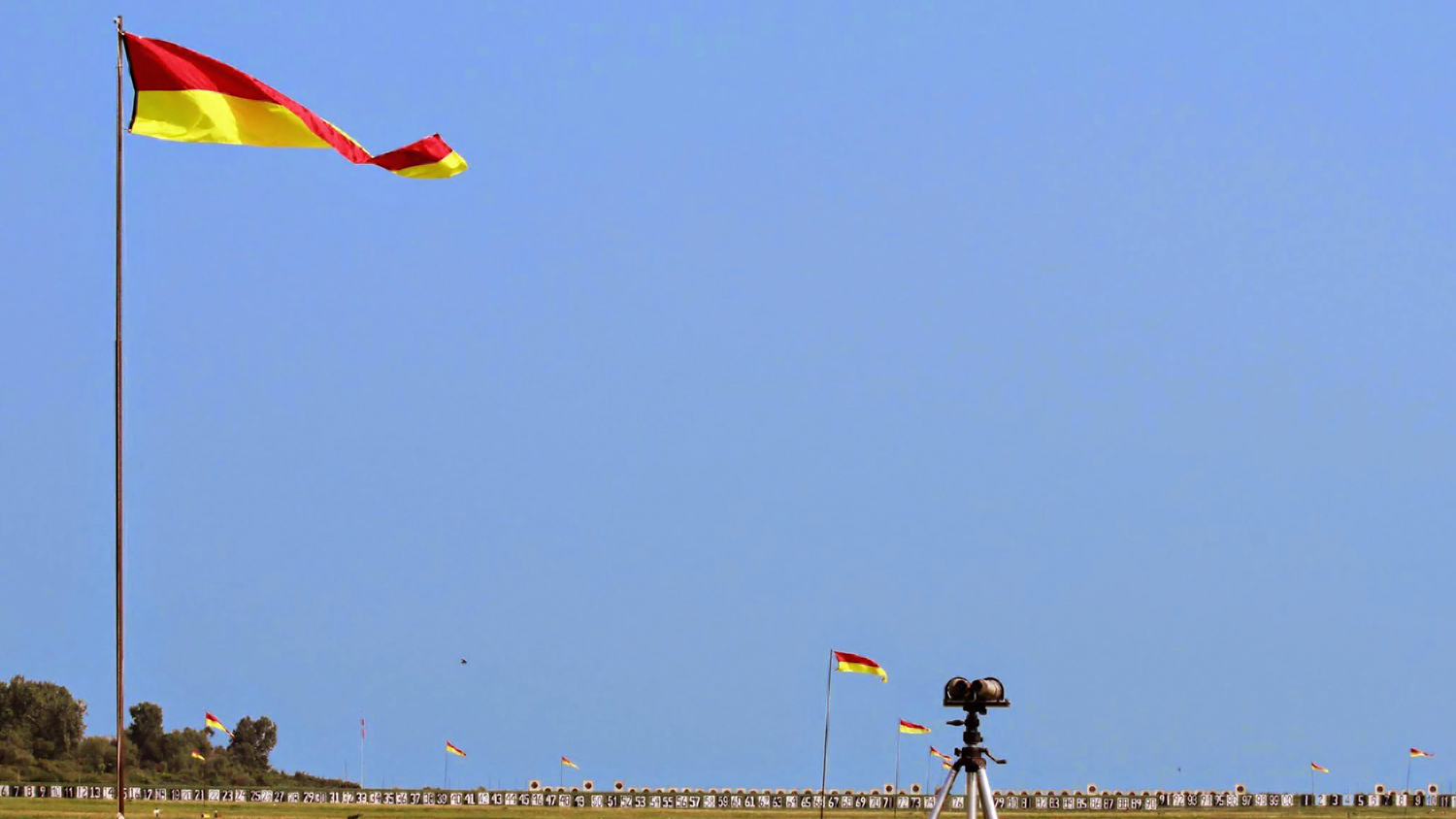
Lones Wigger: This is one time that stands out in my mind where reading the wind properly allowed me to tie the world record and win the Pan American Gold medal in the smallbore rifle 60-shot prone match.
I was in San Juan, Puerto Rico, for the 1979 Pan American Games and had qualified for the 50-meter Smallbore Rifle 3-position and 60-shot prone competitions. During several days of training, I could not figure out what the wind was doing on this difficult range. There were two rows of wind flags located at approximately 10 and 35 meters. Using mirage and both rows of flags, I could get no consistency on shot placement on the target. On the record day for the prone match, I shot about a dozen sighting shots with no consistency, so I finally went for record hoping for a miracle.
I remember my first record shot was a nine at 4 o’clock. I was very disgusted so I decided to watch only the flag nearest to me at 10 meters and continued to fire, being careful to shoot only when this flag was in the same position. It was a very lucky decision since I shot 59 consecutive 10’s after my first record shot and ended with a 599. I tied the world record and won the individual gold medal by several points. International ranges are usually enclosed and protected from wind from the rear. However, this range was open on the far right side beyond the last firing point to allow tractors and range equipment access to the range. Since the prevailing wind was from 4 or 5 o’clock, the wind came through this opening and proceeded down the firing line, which made the first row of flags the main indicator. The other row of flags and mirage had little or no effect on bullet placement on the target. The following day I also had the high 40-shot prone score of 399 during the 3-position match using the same method. Sometimes it is better to be lucky than good.
Lanny Bassham: Lones Wigger was and may still be the best wind-reader in the world. One strategy I always looked for was to simply get squadded next to him and just shoot when he did!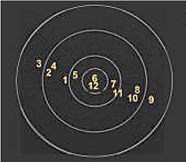
Seriously, one thing I did spend a lot of time on while stationed at Fort Benning was plotting the effects of wind on the bullet’s point of impact. There are several wind plotting charts being used in the industry that just aren’t correct. During my time at Fort Benning, I “borrowed” several very large fans from one of the base activities and positioned them to blow across the range at various angles. I would fire the same ammunition for each angle and note where the points of impact were. The results are included in the Winning In the Wind DVD that Lones and I produced and are shown in the screen shot (pictured). The number is the clock-direction from where the wind was blowing for this particular impact, using right-twist rifling.
Nancy Tompkins-Gallagher: Shooting in the wind can be tough, but if you are mentally and physically prepared, it will always be an interesting challenge. When there is wind (mirage, rain, etc.), you need to remember that everyone else is shooting in the same weather. When you mentally accept this fact, you will be able to focus on your own performance and not let the conditions beat you.
One of the most important aspects of shooting in the wind is to know what the no-wind zero is on your rear sight. In calm conditions, it really won’t hurt you to adjust a click or two to the left or right to keep your shots in the middle. But when the wind or mirage is changing, you must know what you have on your sights at all times. Once you’ve practiced reading the wind, it isn’t hard to remember the amount of windage that you have on your sight while following the wind conditions. You can quickly learn what the various wind conditions are worth on your sight as long as you keep track of your settings. For example, let’s say that you have 3 ½ minutes ‘left’ on your rear sight in order to keep your shots centered. You can look at the wind flags and the mirage and know that what you are seeing is worth 3 ½ minutes. This is the easiest way to learn how to read wind on your own.
A challenge in high power matches is that once you have fired your sighting shots, all of the other shots count for record. If there is a big change in the wind or mirage, you can’t go back to a sighter to see the effect on your shot. When the conditions do change, you will need to do one of the following. 1) Wait for your stable condition to return; 2) Notice the degree of change in the mirage, flags and the targets around you to see where their shot placements are; 3) When confident of what the condition is worth, put the proper adjustment on your sight and start shooting again. (This is where a no-wind zero is necessary, in order to avoid becoming lost.)
Shooting well in the wind depends on: 1) Having confidence in yourself and your equipment; 2) Having an established no-wind zero; 3) Knowing how much wind you have on your sight at all times; 4) Using a stopwatch so you can wait out conditions without running out of time; 5) Calling your shots as an indicator of wind changes; 6) Being patient in unstable wind conditions and waiting until you are confident that you can receive a fairly centered shot; 7) Watching for changes—wind flags, mirage, other shooters’ targets, blowing dust, vegetation or any other indicator of wind velocity or direction change; 8) Having fun!
David Tubb—From his notes at the 2004 NRA National Long-Range Championships: Shot the Leech Cup on Saturday. Conditions were pretty good that morning. The Leech Cup is *the* any-rifle-iron-sight event fired at 1,000 yards. Fired a 200-12X—a respectable score. High scorer from each relay goes to the shoot-off after the conclusion of the team matches (normally late afternoon) and my 200-12X made the cut.
Shoot-off protocol is three sighters and 10 shots for record—X’s count. I Shot 100-4X in the shoot-off. Just so happens that one of my competitors and longtime friend—Nancy Tompkins-Gallagher, shot the same score. After about 10 minutes of waiting around, we both now go into the sudden death shoot-off. Sudden death is exactly as it sounds (no sighters). As each shot is taken, if you shoot a lesser value shot than your opponent, then you lose the match. In sudden death, the X-ring is only as good as the 10-ring. (A 10 is as good as an X.)
So the two of us start shooting with a large crowd watching at a bank of about 15 targets. The other class shoot-off’s had now concluded, but the entire bank of targets cycled with each set of sudden death shot sequences, so it was important to keep your shots on your assigned target number.
The sudden death firing sequence gives you 1 minute to shoot the shot and at the end of the minute, all the targets cycle down into the pits. It then takes another couple of minutes to go through the administration of asking are there any 5’s are there any 6’s etc. until we get to the “are there any 10’s?” You hope your target doesn’t appear from the pits when they ask, “are there any 9’s”.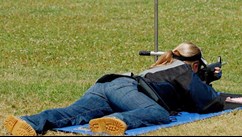
So one can imagine that having up to three minutes in between each of your sudden death shots that the wind and mirage conditions can certainly change at 1,000 yards. I would shoot a shot and then look through my spotting scope, then bury my head on my left arm to relax my eyes and try to remember what the conditions (wind and mirage) looked like just after I fired that shot. Nancy was probably doing the same. The targets would cycle up and Nancy and I would repeat with another sudden death shot. After looking back through the scope and judging if and how the conditions had changed from three minutes earlier, I would make minor corrections.
As I said earlier, this occurs in the late afternoon so the light is fading and our eyes are tiring. This sudden death took about 40 minutes to produce a winner. I was told later that this was the longest sudden death event in the history of the National Matches. It was late enough in the afternoon that I was beginning to use a “frame hold” (entire target is visible in the front aperture) because the sun was beginning to get low in the sky.
On the 17th shot, one target did appear from the pits when the “are there any 9s?” was announced—and it was over. To recount: 20 shots for record to make the shoot-off; 10 shots for record to finish the shoot-off; another 17 shots for record until the sudden death winner was declared. A total of 47 shots in the 10- or X-ring, with iron sights, from 1,000 yards, all the while with wind and mirage conditions continually changing. This time, luck was on my side.
[Editor’s note: Tubb’s “luck” continued that year. Following an unaccustomed second place in service rifle, Tubb did not lose a single point over the next four days of shooting the long-range events: Three 600s, two 1000s and one Palma for a score of 1450–101X, out of a possible 1450.]














